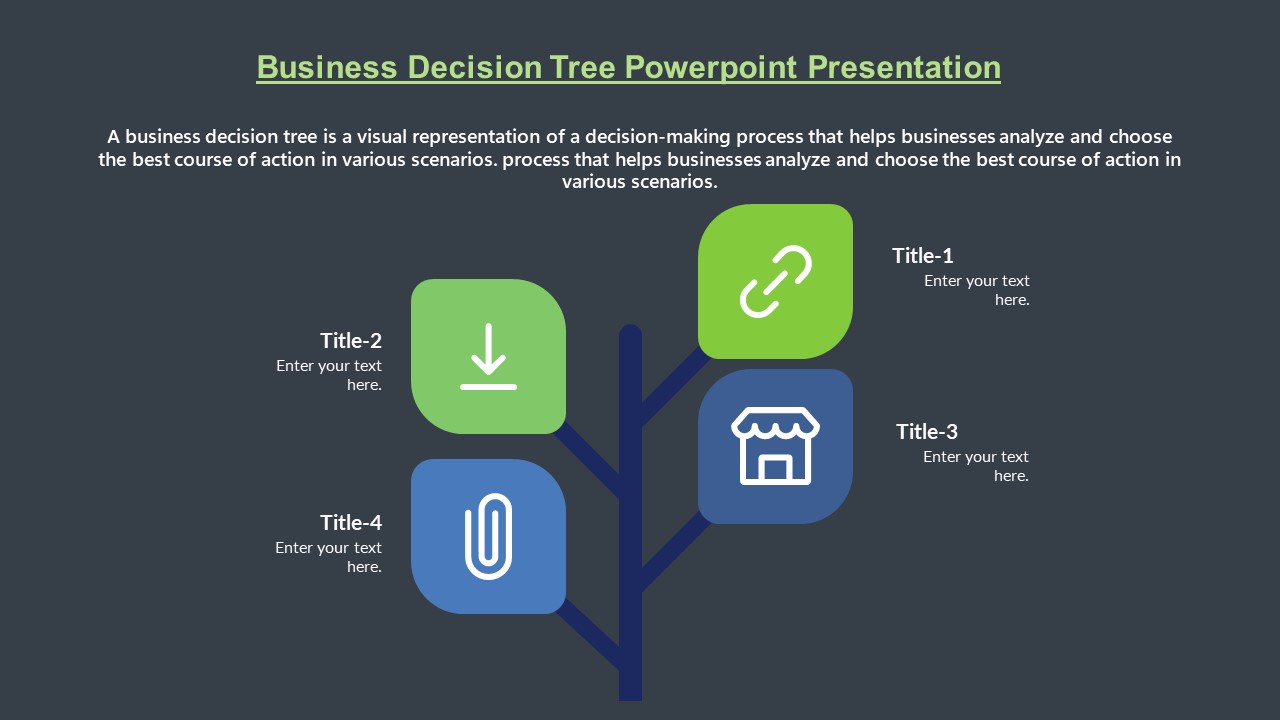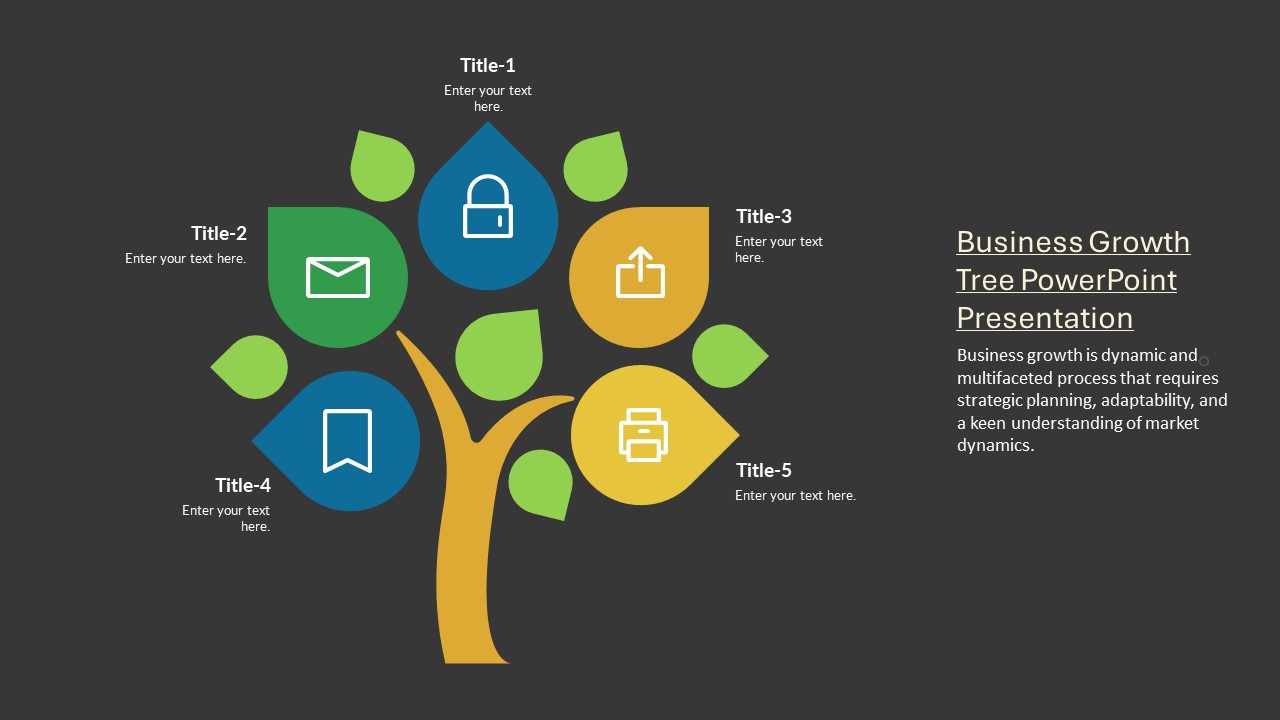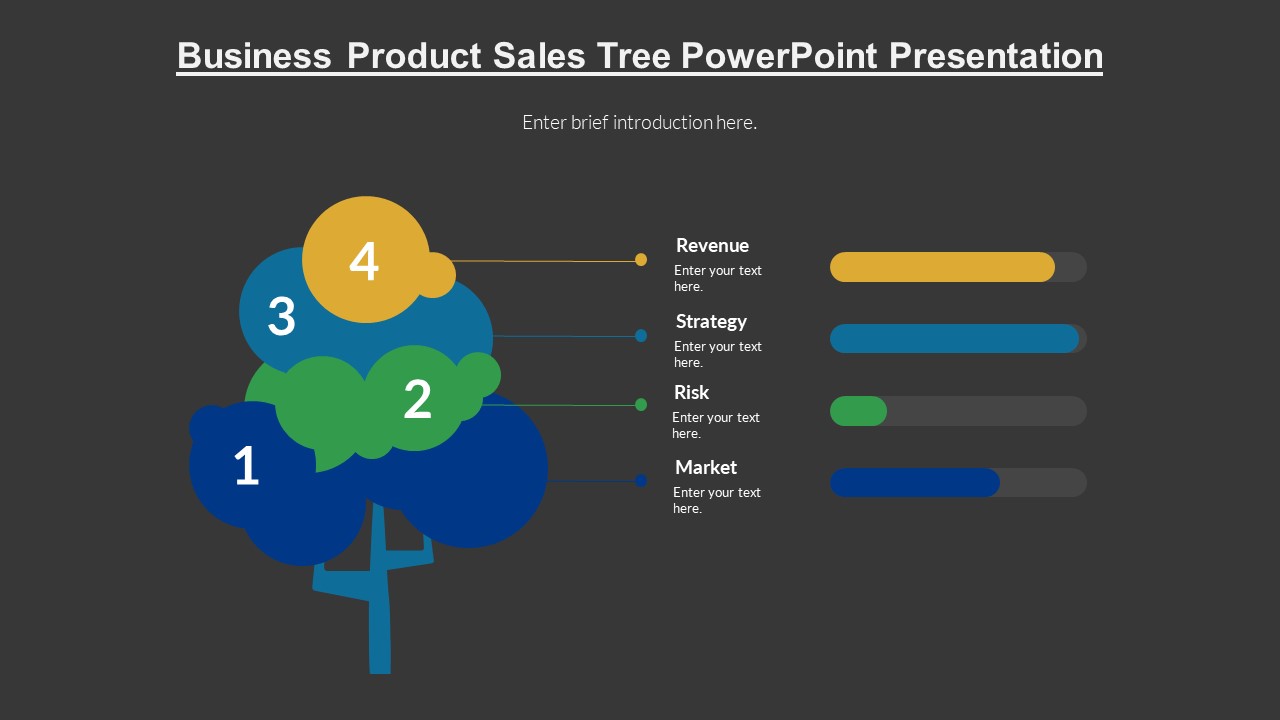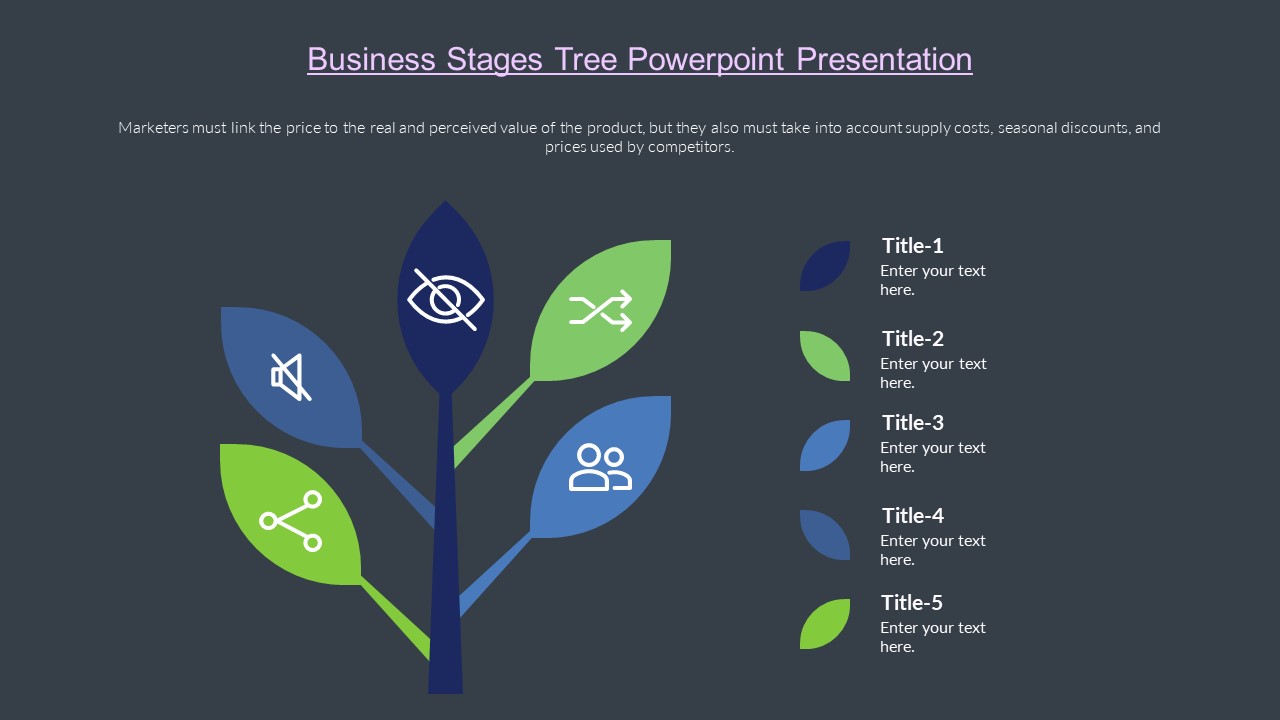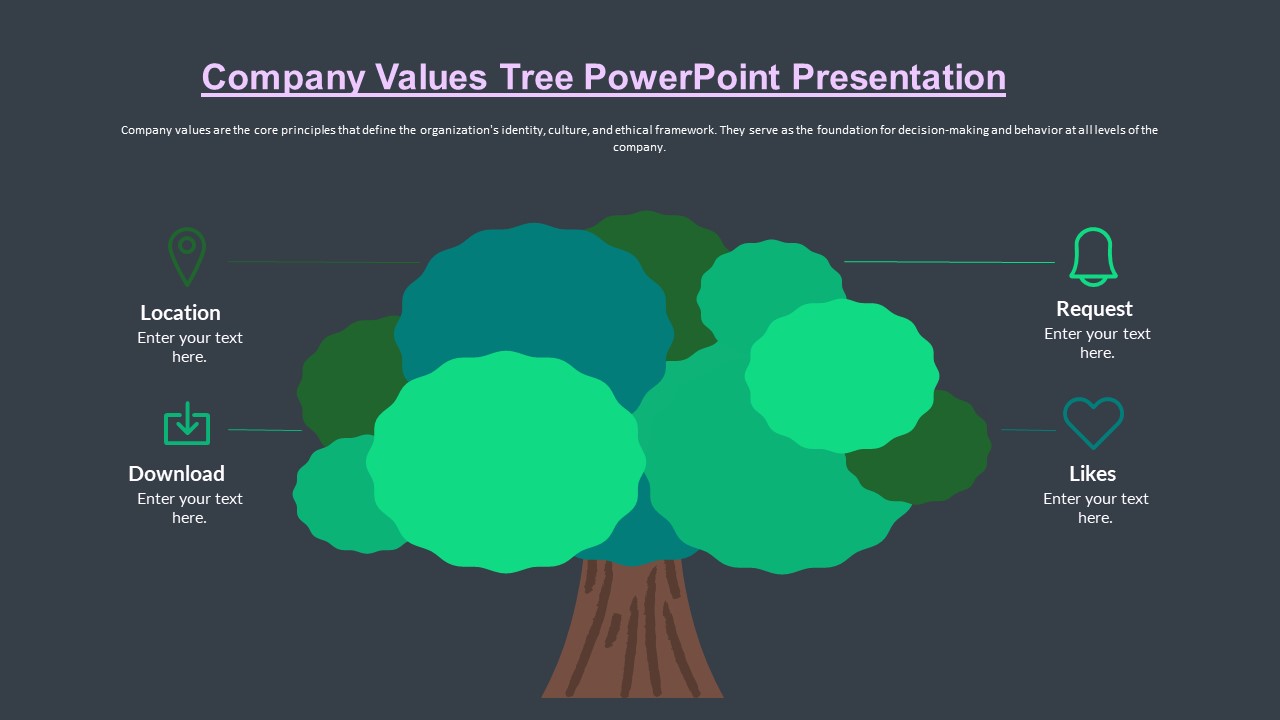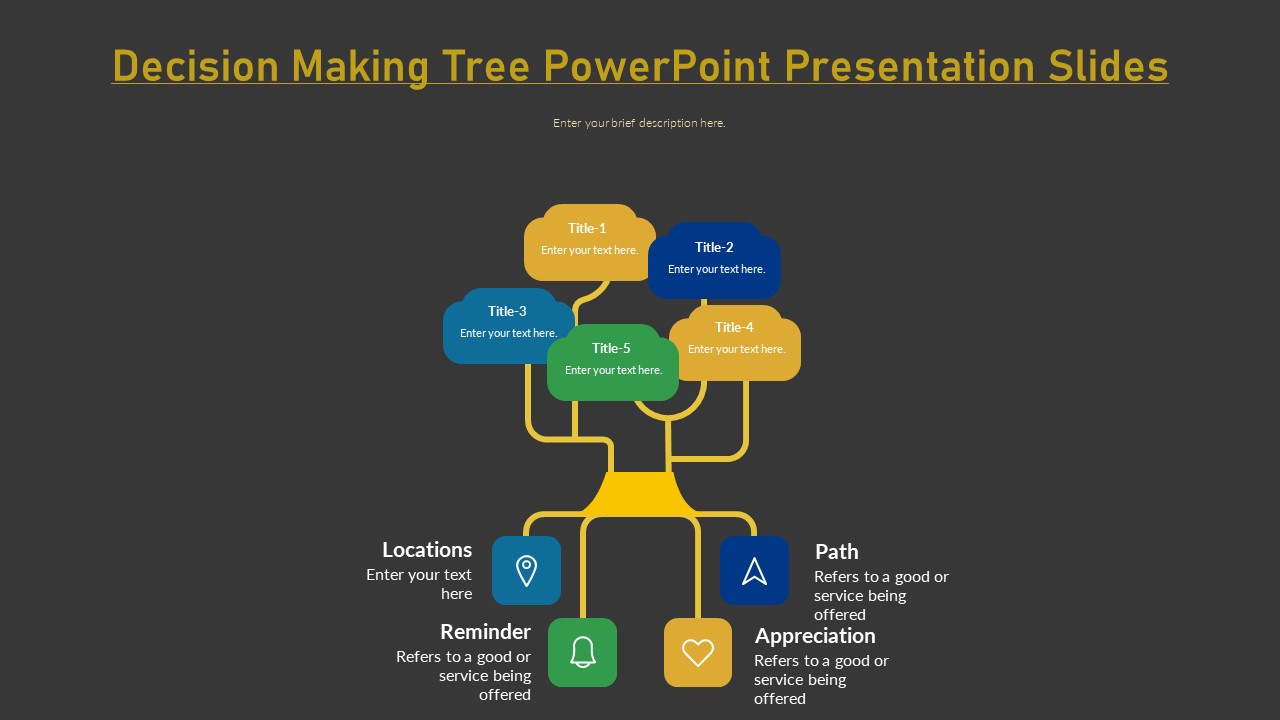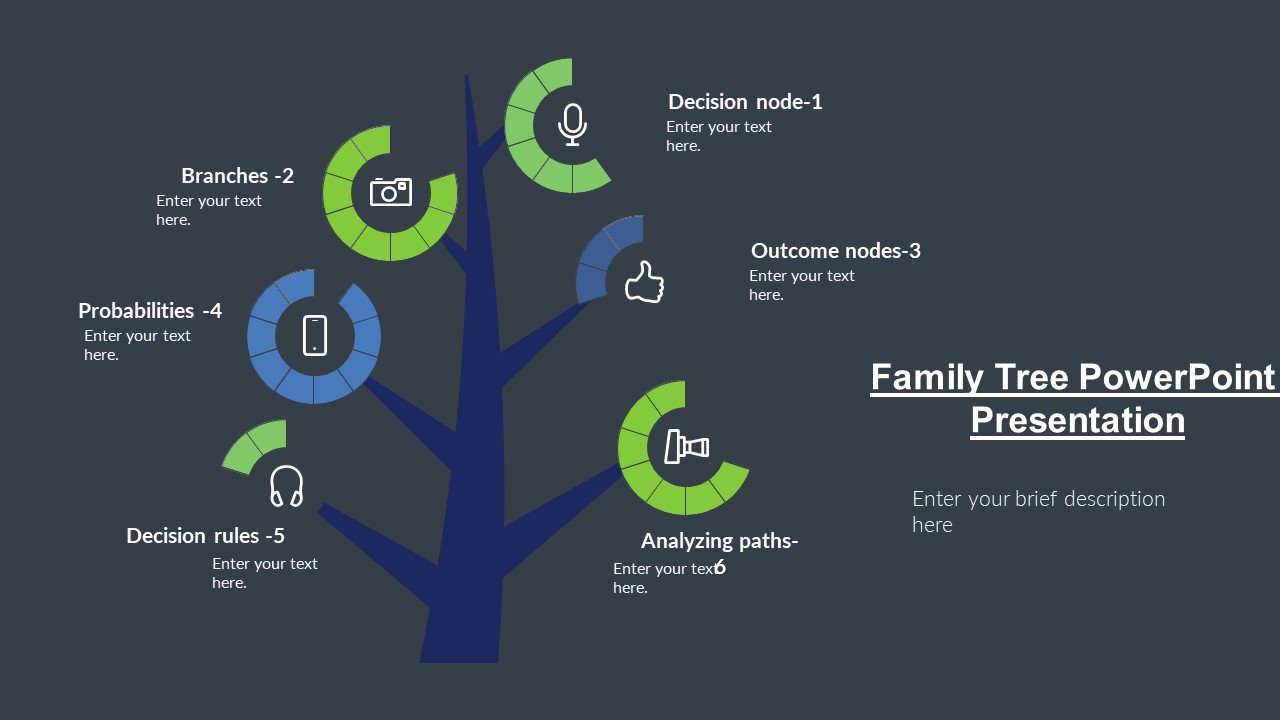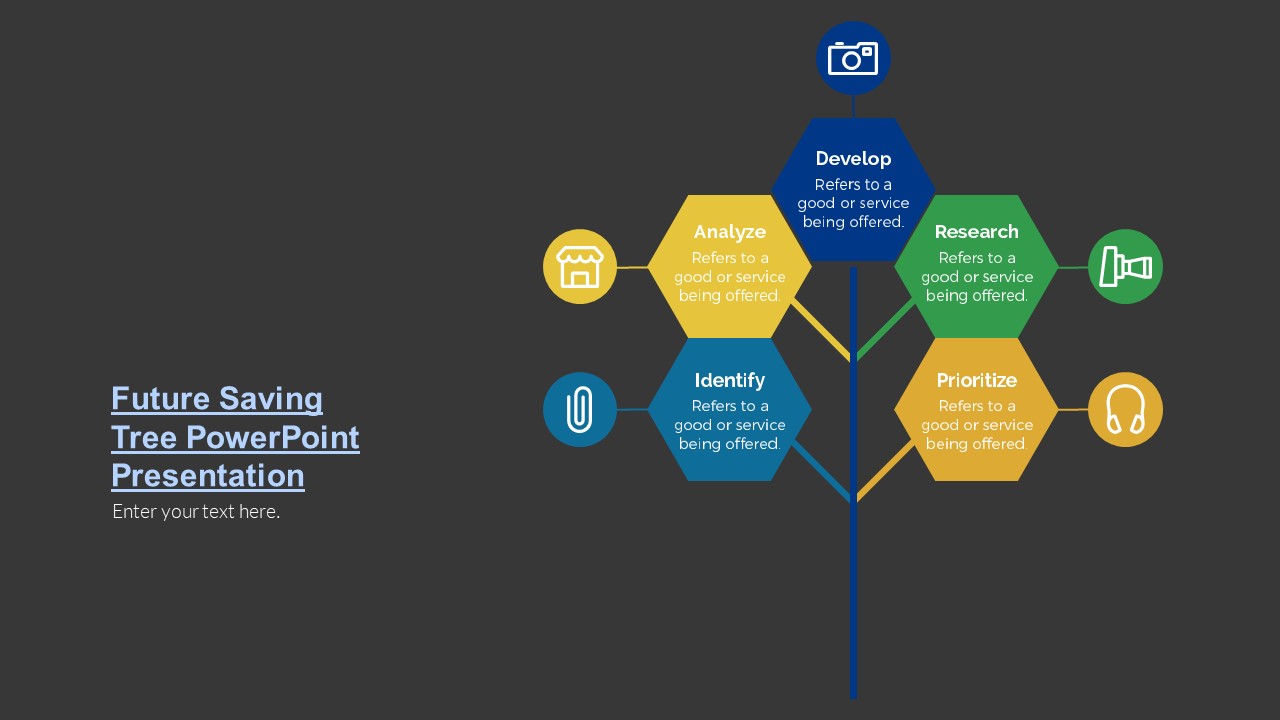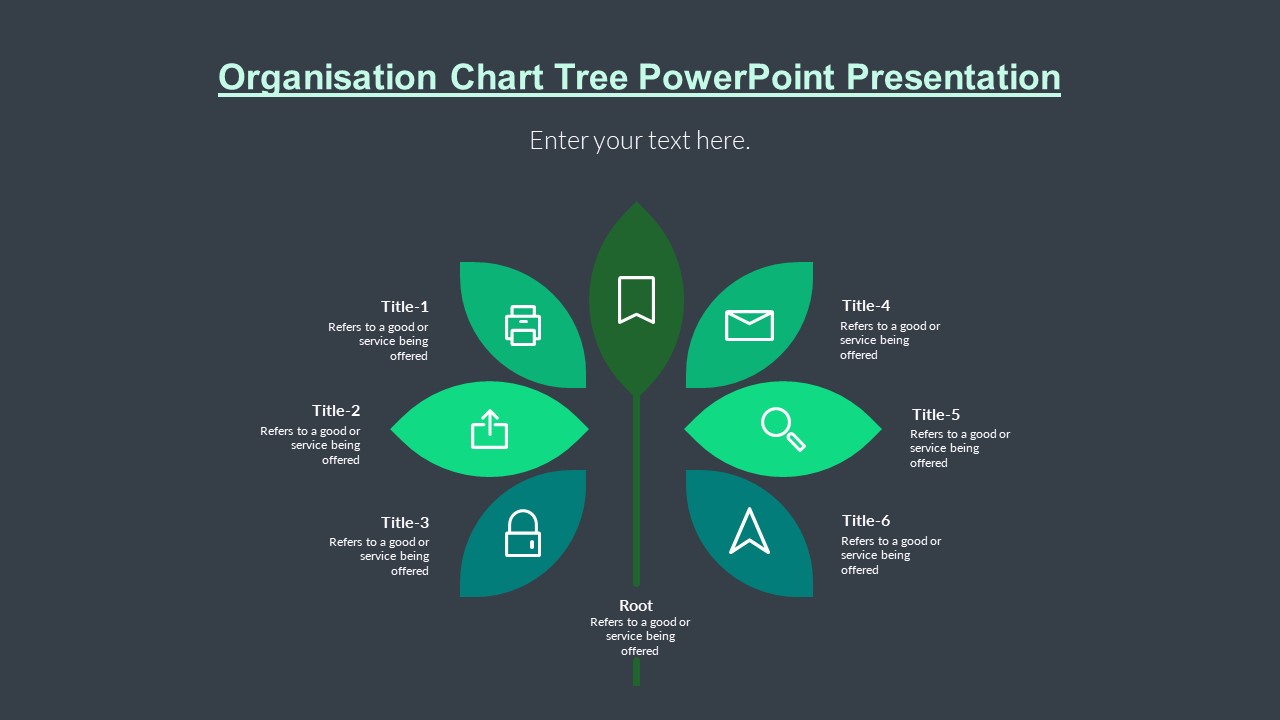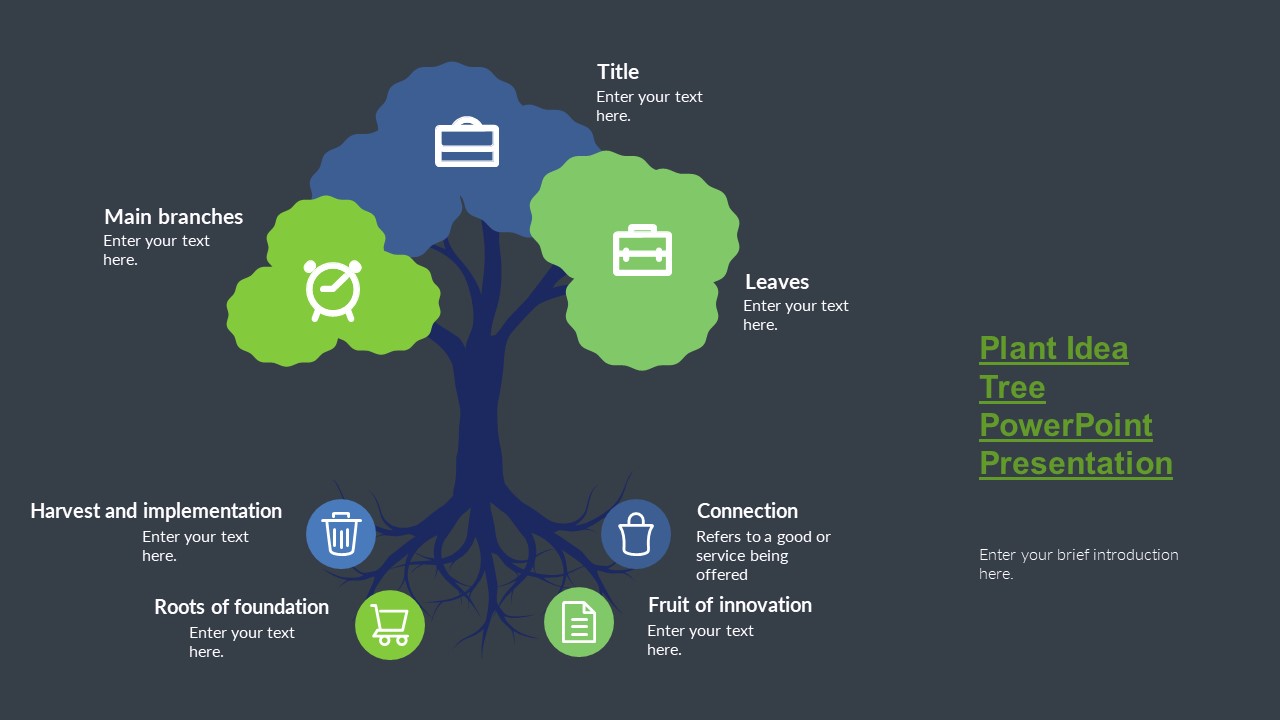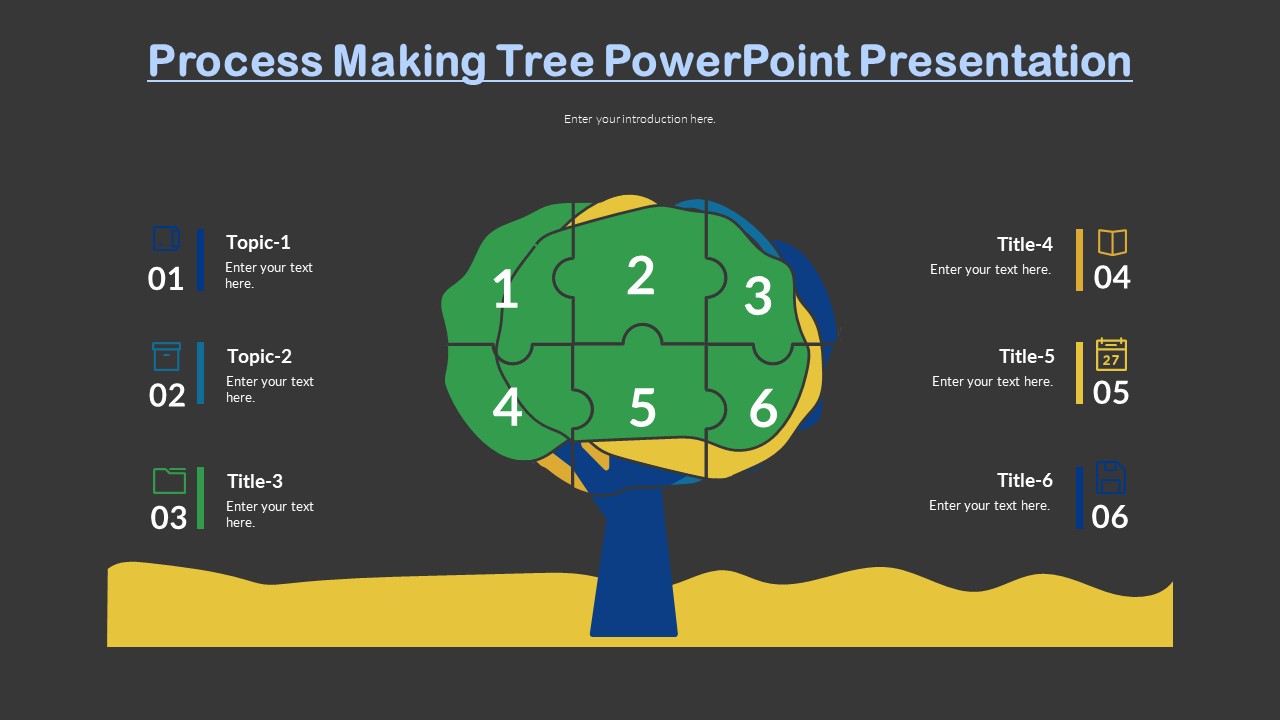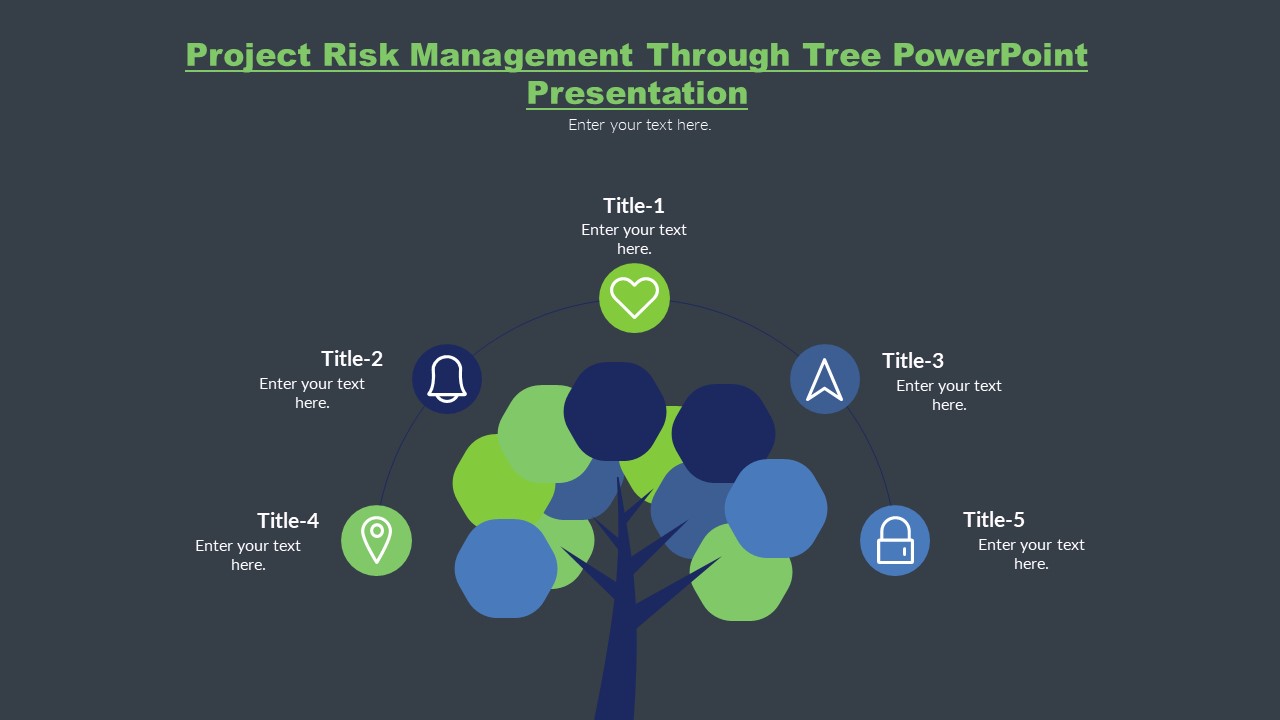Tree
Tree PowerPoint presentations and diagrams are powerful visual tools used to illustrate hierarchical structures, relationships, classifications, and decision trees in a clear and organized manner. These presentations are versatile and can be utilized across various domains, including business, education, research, and project management, to convey complex information in a visually engaging format.
Tree PowerPoint presentations typically feature slides depicting hierarchical trees, with branches representing different levels of classification, components, or options. They are effective for presenting organizational charts, family trees, taxonomy classifications, process flows, project breakdown structures, and decision-making frameworks.
In business settings, tree diagrams are commonly used for organizational chart presentations, depicting reporting structures, departmental hierarchies, and team compositions. They are also utilized for outlining project plans, work breakdown structures (WBS), and decision trees to facilitate project planning and execution.
In academic and research contexts, tree PowerPoint presentations are valuable for illustrating evolutionary relationships, genealogical trees, classification systems, and concept hierarchies. They aid in visualizing complex concepts, theories, and data sets, enhancing comprehension and knowledge transfer among students, researchers, and educators.
Tree diagrams can be customized with different shapes, colors, fonts, and styles to suit the specific needs and preferences of presenters. They enable audiences to grasp the hierarchical relationships and dependencies among various elements efficiently, fostering clarity and understanding.
Overall, tree PowerPoint presentations and diagrams are indispensable tools for organizing information, facilitating decision-making, and communicating complex ideas with clarity and precision across diverse fields and disciplines.


